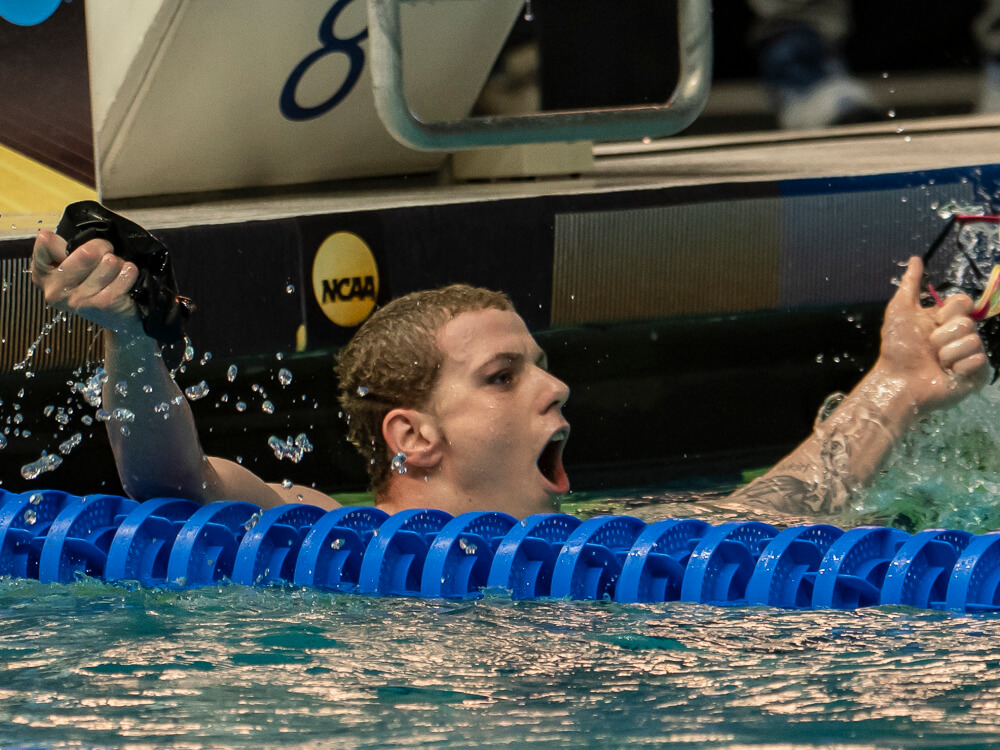How Previous NCAA Champions Have Performed at Their Midseason Competitions: The Numbers Are Interesting

How NCAA Champions Have Performed at Their Midseason Competitions: The Numbers Are Interesting
As the weather begins to chill, the holiday season has arrived. It’s a time of relaxation and cheer, a break from the pressures of the world. That is, except for swimmers.
In the swimming world, the start of the holidays signals one of the season’s most significant events: the midseason meet. The meet often holds more weight than a traditional dual meet, due to the additional focus placed upon it by teams. Swimmers will generally rest/taper and don technical suits for their midseason invitational. It gives the meet the same feel of a championship competition, and allows it to serve as a benchmark for their current training shape.
With the additional stakes of the meet, it’s common for swimmers to feel more pressure. A successful midseason meet supposedly signals “being on the right track” for championship success in February. But are the two actually correlated? We took a look at how the NCAA champions in each individual event over the past three years performed at their midseason meets, to try to uncover the truth behind the meet’s impact.
Scoring Season-Bests
With the additional performance-aiding factors (rest, the suit), it’s a common expectation by swimmers to reach season-best times at the midseason meet. The preferential circumstances certainly make the accomplishment seemingly a given for many swimmers. However, the results showed this isn’t always the case.
Over the past three years, just 57.69% of the time has the swimmer who won the individual event at NCAAs, contested it at midseason and dropped time from their previous season-best. This lower-than-expected number can be attributed to a variety of factors, but it shows that season-best races are rarer than they appear.
Of the 36 instances where an athlete didn’t achieve a season-best time in an event they won at NCAAs, the athlete added time at midseason in just twelve of them. Two-thirds of the time, the athlete didn’t even swim the event at their midseason meet, a surprising trend. This shows how much can change between midseason and championships. A swimmer can switch the events they prioritize in the two months before the postseason. Even with the high expectations placed on midseason, these results show it can be just a placeholder for what’s to come.
The 12 athletes who added time from their season-best at midseason made up 15% of the sample, a sensible number considering the conditions. A variety of factors could have contributed to their swims individually, ranging from illness, to injury, to simply having an off day. A common trend among the athletes, however, was a busy schedule of meets throughout the summer.
Of the 12 instances, 10 athletes participated in two or more large national or international meets during these three months. This scenario could have led to the athletes placing less emphasis on the midseason meet, having already faced high-level competition earlier in the year. The strain from multiple high-level meets within the year could also weigh on them, affecting performance.
Whatever the factor, it’s clear that excellence at the midseason meet is not always located. Even the best can struggle, especially under high expectations.
Personal Bests: Hard To Come By
While season-bests are a positive, midseason meets also represent an opportunity for growth. These meets usually replicate the circumstances of a championship meet, making the possibility of dropping time greater than any dual meet. But how realistic is this achievement really?
According to the performance of these NCAA athletes, not very. The swimmer who won an individual event at NCAAs achieved their personal-best time at midseason in the event just 24.36% of the time.
The low number shows the difficulty of achieving personal bests early in the season. Even if midseason has the same circumstances as a championship meet, the extra training done in between the meets can’t be replaced. While personal bests can occur, the numbers prove they’re a rare achievement, not to be expected.
Takeaways
Based on the data, midseason meets stand as a good benchmark for success. While it’s more likely than not that swimming well at midseason leads to a successful championship, there’s lots of room to grow and develop. As the saying goes, “Champions aren’t born. They’re made,” with the midseason meet just a stepping stone toward success.



